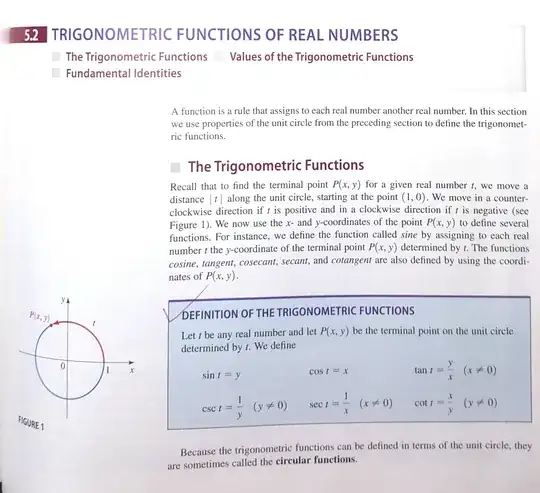Can anyone, please, help me with the concept of defining trigonometric functions? I don't understand what is written here:
As far as I remember from school, the sine is the ratio of the opposite leg (of an angle in the right triangle) to hypotenuse. However, in the image above I don't see any right triangles. I don't even see any triangles at all! How is it then that "we define that sine of t is equal to y"?
I seem to be missing some important link here and, therefore, cannot grasp the basics of the concept of definition of trigonometric functions.
